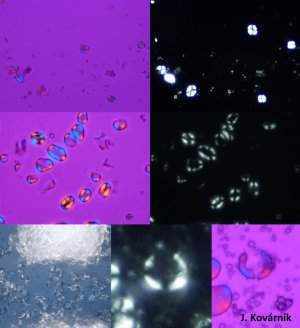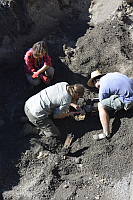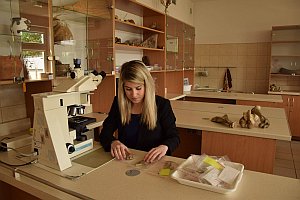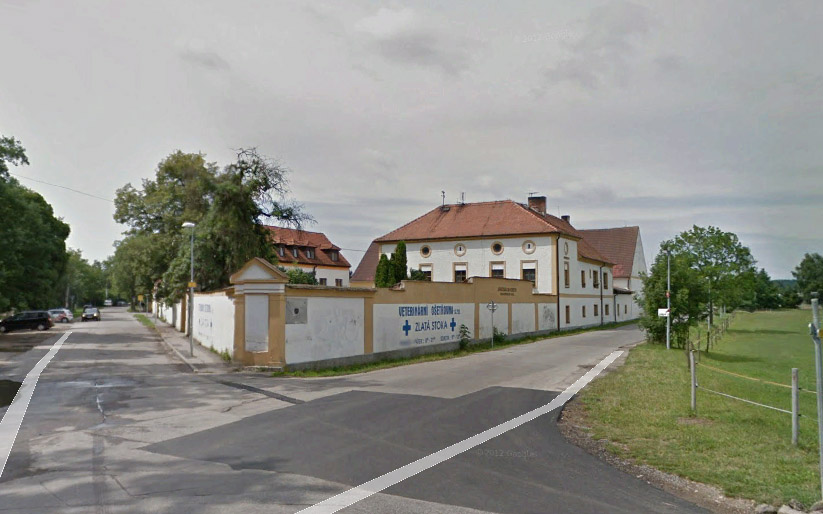Starch
Analysis of starch grains is a suitable but rather still less common archaeobotany technique in archaeological research. However, starch analysis was employed in archaeological research in last three decades. Starch grains belong into group of plant microremains along with phytolithes, pollen, spores and other “non-pollen” objects. Examination of these plant residues elucidates the changes in the environment, both natural and anthropogenic. Starch occurs as insoluble, semi-crystalline granules in plant tissues as objects with stored energy, which occurs in specific parts of plants such as seeds, roots, tubers (storage organs) and transitory starch. Analysis of starch grains is connected with investigation of plant use and plant processing in past and also composition of herbaceous component of human diet. This technique is also suitable for research in use and function of artefacts, in issue of plant domestication and vegetation history. Damaged starch grains could hinder the use of this particular technique. Results of starch analysis are suitable to complement the result gained through the application of other techniques like palynology, phytolith analysis or plant macroremains
 Starch grains from archaeological artefacts
Starch is a reserve polysaccharide in majority of autotrophic plants. The exception is presented by families Asteraceae, which store inuline as reserve polysaccharide. Starch is a ready source of glucose for plants, suitable for long storage. It is a composition of two homopolysaccharides (amylose and amylopectine).
Starch is synthesised in green parts of the plant in chloroplasts. There are created small starch grains about 1 µm in diameter, which are called temporary or transitory. These are further used or transported. Starch is further stored in special organelles – amyloplasts. Major quantity of starch is stored in reserve organs in specialized cells of seeds, roots and tubers. Starch is stored in amyloplasts in form of starch grains, which are species-specific and differ in shape, size and polysaccharide ratio. These characteristics of starch grains are for the most part given genetically, but are also influenced by external.
Analysis procedure
Starch can be identified using polarized light optical microscopy where the starch grain has a specific optical expression (extinction cross). Two microscopy workstations are used at LAPE for this purpose. Nikon Eclipse optical microscope and Leica MD 2500 optical microscope. Both workplaces are equipped with a digital camera for recording and a computer with control and analytical software. For accurate morphological analysis of starch grains, it is necessary to use comparative collection. Also can be used the statistical procedure of starch identification of archaeological samples.
|
Where to find us?
Laboratory of Archaeobotany and Palaeoecology
- Faculty of Sciences,
- University of South Bohemia
-
- Na Zlaté stoce 3
- 370 05 České Budějovice
Contact
+420 38 903 6306
+420 38 903 6308
|




